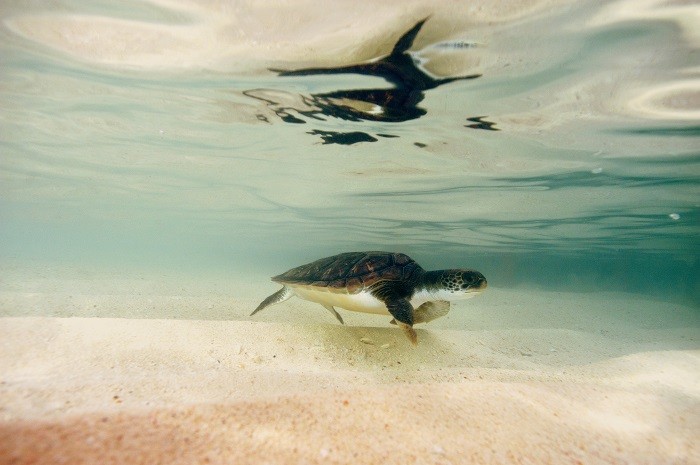Do not refresh or close this window.

Do not refresh or close this window.


Share
A major new scientific report entitled, “How many came home? Evaluating ex-situ conservation of green turtles in the Cayman Islands” shows that most nesting turtles in the Cayman Islands are related to those released from the Cayman Turtle Centre in the 1980’s and 1990’s. The report is based on genetic results from the University of Barcelona and was recently published in the Journal of Molecular Ecology.
The report states: “We determined that 90% of the wild individuals were related to the captive stock. Our results suggest a strong impact of the reintroduction program on the present recovery of the wild green turtle population nesting in the Cayman Islands.”
In addition, green sea turtle nests have risen from just one nest reported on Grand Cayman in 1999, to over 200 nests today. Dr. Walter Mustin, Chief Research and Conservation Officer, Cayman Turtle Conservation and Education Centre, said, “This data is proof that captive rearing and head-starting of sea turtles are viable conservation tools that can bring an endangered species back from the brink of extinction. It also highlights the need for continued and sustained releases to counter erosion of nesting habitats, aggressive poaching, and accelerating climate change.”
The report highlights the significance of this recovery very dramatically by stating: “In the 1980s several studies concluded that the green turtle nesting population of the Cayman Islands was extinct.”
The survey is the result of many years of extensive monitoring of turtle populations by the Department of Environment (DoE) which began in 1998 in the Sister Islands and in 1999 in Grand Cayman.
Tim Adam, Chief Operating Officer, Cayman Turtle Conservation and Education Centre, said, “The finding that 90% of the wild nesting green turtles are a result of Cayman Turtle Conservation and Education Centre’s captive breeding and release programme speaks for itself. It tells of the amazing contribution of our organisation, its predecessors and the people who have dedicated themselves to the task over the past 50 years.”
The Centre adheres to the strictest protocols to ensure that there are no detrimental effects from releasing captive-bred turtles into the wild, as Mr. Adam further stated, “Back in 2016 we reviewed the Cayman Islands Department of Environment endorsed pre-release protocol for the captive-bred captive-reared Blue Iguanas that are released into the wild and enhanced it, incorporating elements appropriate to our turtle release procedure. The Cayman Turtle Centre’s robust pre-release processes and procedures with full-time veterinary oversight for breeding, rearing, quarantine, tissue sampling and release are more rigorous than any we have found in many other organisations around the world.”

The Centre’s dedicated human resources include a research and conservation officer, veterinarian, aquarists and a complete education department. “Cayman Turtle Conservation and Education Centre’s release programme will continue to fulfil our primary purpose of conservation and growing the wild population of Cayman’s sea turtles,” Mr. Adam stated. “It is extremely encouraging to find out with firm data that our programme is such a significant positive factor in the preservation of the green sea turtle and taking a marine animal off the near-extinct list. Not only are we seeing an increase in numbers, the results show a high genetic diversity and no difficulties regarding breeding.”
Last year, the Cayman Turtle Centre released more than 1,300 turtles from eggs laid within the facility, into the sea. Of that 275 are head-started turtles, which are typically between one and two years old, and the remainder smaller hatchlings which come from eggs bred and laid within the facility.